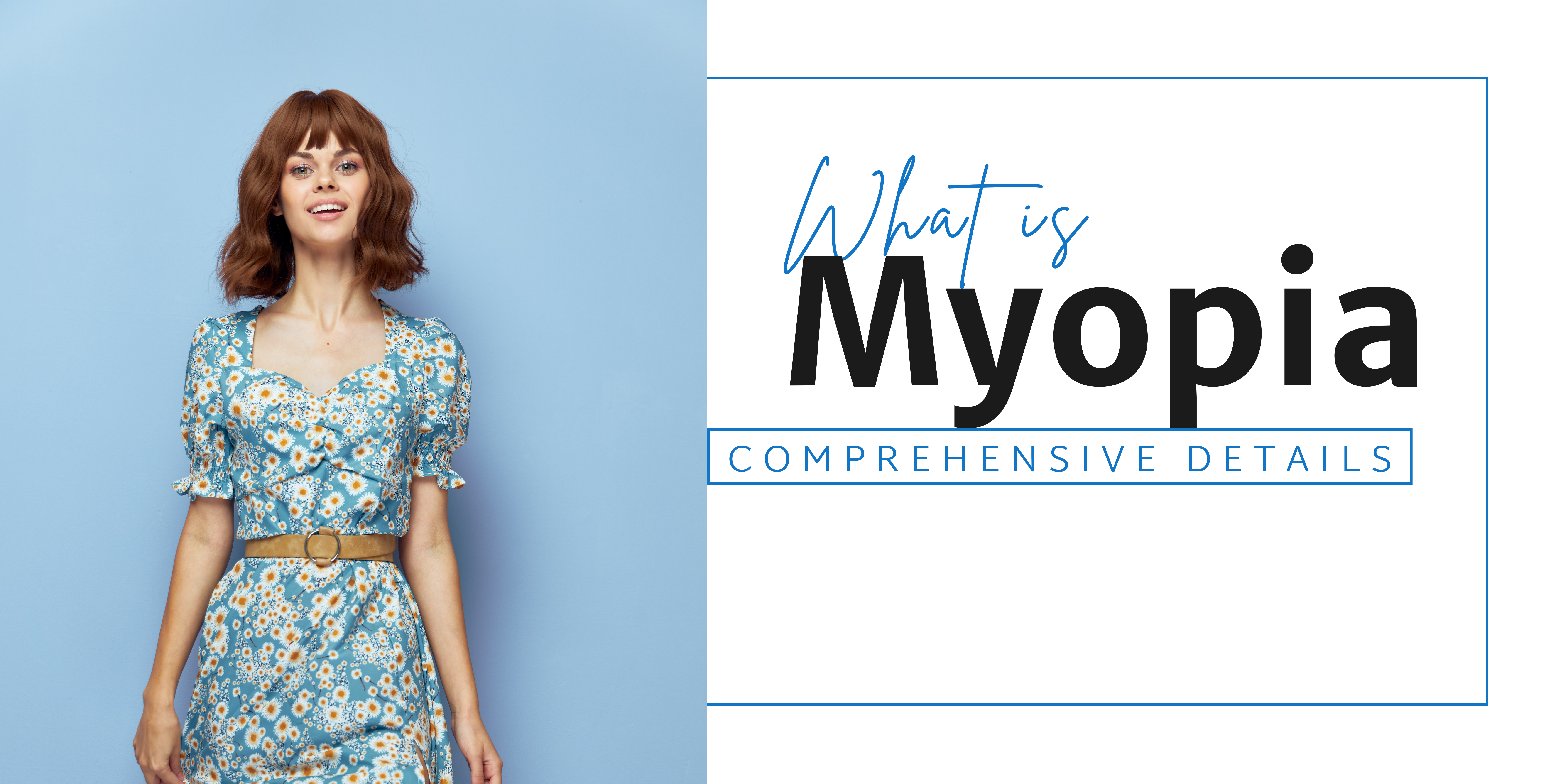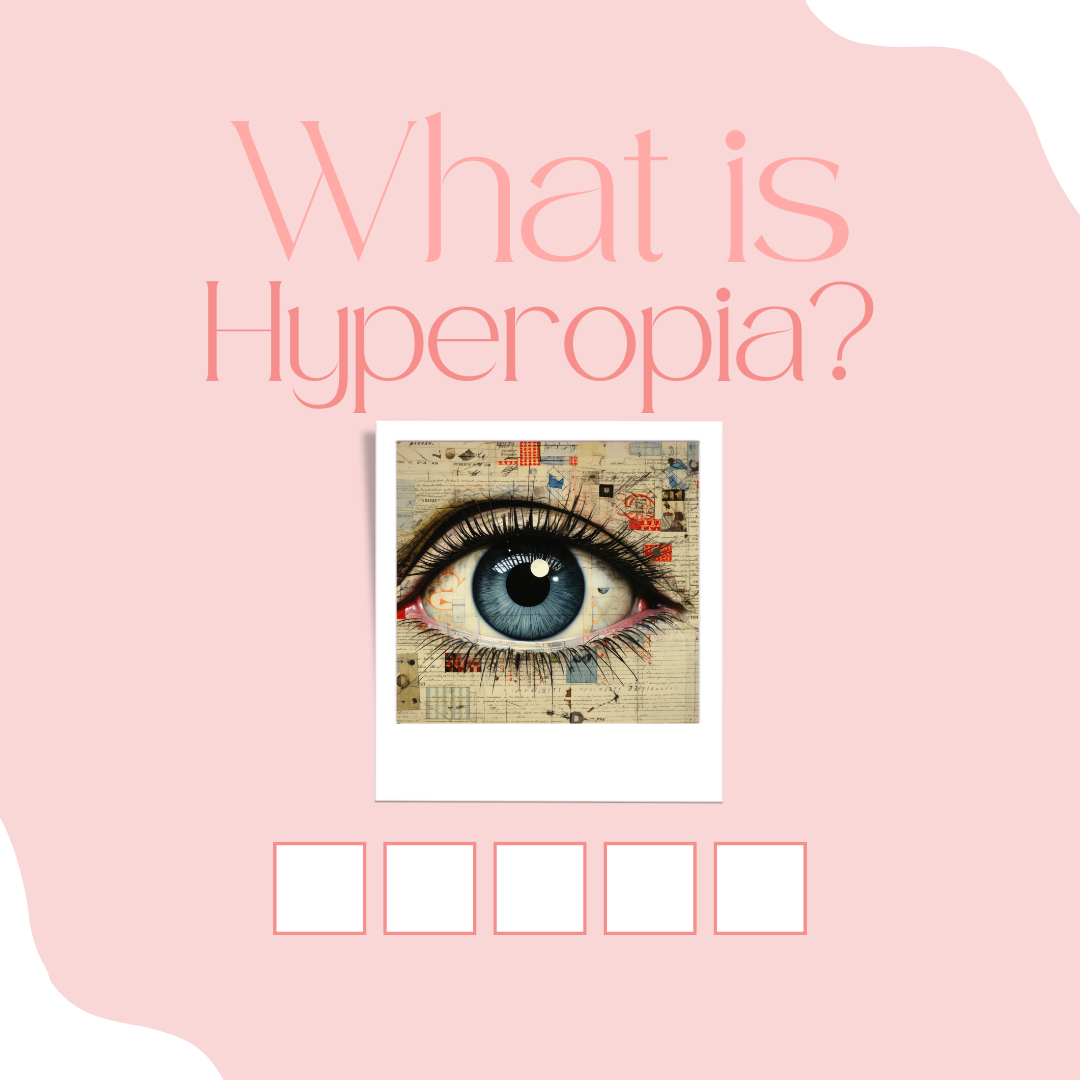What is Presbyopia: Every Details You Need to Know

Presbyopia, a vision problem that happens as you get older. It makes it hard to see things close up, like when you're reading. This usually starts around age 40. The word "presbyopia" comes from Greek and means "old eye," showing that it's part of aging. People with presbyopia often hold books or phones farther away to see better.
Table of Contents
Let's explore more about what causes it and how it affects daily life.
What is Presbyopia?
Presbyopia is a common age-related vision condition characterized by a gradual loss of near vision, often beginning around the age of 40. It occurs due to the natural aging process, specifically the weakening of the eye muscles responsible for focusing.
Symptoms typically include difficulty focusing on objects up close, eyestrain, and challenges with reading small print.
How Common Are Presbyopia?
- A recent report by the Vision Loss Expert Group estimated that approximately 510 million people worldwide had uncorrected presbyopia in 2020.
- Data from the United Nations in April 2022 suggested a global population of 7.9 billion people.
- In 2015, around 1.8 billion individuals were identified as presbyopic, with projections indicating an increase to 2.1 billion by 2020.
- This means that approximately 26% of the world's population is currently affected by presbyopia.
- In the United States, presbyopia prevalence among adults aged 45 and older ranges from 83.0% to 88.9%.
- An estimated total of 123 million presbyopes were identified in America in 2020.
- The greatest burden of vision impairment from uncorrected presbyopia is observed in developing, low-resource countries, where up to 94% of the population may lack proper correction.
- In 2015, the global unmet need for presbyopia correction was estimated at 45%.
- Near vision correction rates ranged from 96% in Europe to only 6% in Africa.
Sources: presbyopia physician nature pubmed
Common Types of Presbyopia
Presbyopia, the age-related condition affecting near vision, manifests in five distinct types:
- Incipient Presbyopia: The earliest stage characterized by slight difficulty in reading small print.
- Functional Presbyopia: Marked by increasing challenges with near vision.
- Absolute Presbyopia: At this stage, near vision becomes significantly impaired, rendering it impossible to focus on close objects (farsightedness).
- Premature Presbyopia: Occurs when presbyopia develops before the age of 40, indicating an early onset of the condition.
- Nocturnal Presbyopia: Particularly challenging in low-light conditions, making it difficult to focus on near objects during nighttime or dimly lit environments.
Presbyopia Signs & Symptoms
If you find yourself holding reading materials farther away than usual, experiencing blurry vision when reading at a normal distance, or getting headaches or feeling tired when working on things up close, you might have presbyopia.
Causes of Presbyopia
In your eyes, there's a cornea and lens that work together to focus light onto the retina, helping you see. When things are near or far, your lens adjusts its shape to focus properly.
However, as you get older, your lens becomes less flexible and harder, leading to presbyopia. This stiffness makes it tough to focus on close-up objects, causing them to appear blurry.
Risk Factors
Certain factors can raise the likelihood of experiencing presbyopia:
- Age: Typically, presbyopia becomes noticeable as individuals reach their 40s and progresses with age, affecting most people between 40 and 65 years old.
- Medical Conditions: Some health issues, such as heart disease, diabetes, or multiple sclerosis, can accelerate the onset of presbyopia. This condition may manifest at a younger age, known as premature presbyopia, for those dealing with these medical concerns.
- Farsightedness: If you are already farsighted (having difficulty seeing nearby objects clearly), you might encounter presbyopia symptoms earlier than others. Farsightedness can exacerbate presbyopia symptoms, making it more challenging to focus on close-up tasks.
- Medications: Certain medications have been associated with triggering presbyopia or worsening its symptoms. Examples include antihistamines, antidepressants, and diuretics. These drugs can affect the eye's ability to focus properly, contributing to the development or progression of presbyopia.
Prevention
Preventing presbyopia entirely isn't possible since it's a natural consequence of aging. However, you can actively maintain your eye health to minimize its impact and ensure optimal vision throughout your life. Here's how:
- Regular Eye Exams: Schedule comprehensive eye exams with an optometrist or ophthalmologist at regular intervals. These exams not only assess your current vision but also detect any early signs of presbyopia or other eye conditions, allowing for timely intervention.
- Corrective Eyewear Maintenance: If you already wear glasses or contact lenses, it's crucial to keep them up-to-date with your current prescription. Using outdated or incorrect lenses can strain your eyes and exacerbate presbyopia symptoms.
- Sun Protection: Protect your eyes from harmful ultraviolet (UV) radiation by wearing sunglasses with UV-blocking lenses when you're outdoors, especially during prolonged periods of sun exposure. This helps prevent conditions like cataracts and macular degeneration, which can worsen age-related vision changes.
- Optimal Lighting Conditions: Ensure that your indoor environments are well-lit, especially when engaging in activities that require close-up focus, such as reading or crafting. Good lighting reduces eye strain and makes it easier to see clearly, lessening the burden on your eyes.
- Management of Systemic Health Conditions: Take proactive steps to manage underlying health conditions like high blood pressure, diabetes, and cardiovascular disease. These conditions can affect your eye health and contribute to vision changes, including presbyopia. Following your healthcare provider's recommendations for medication, lifestyle modifications, and regular monitoring can help preserve your vision.
- Eye Safety Practices: When participating in activities that pose a risk of eye injury, such as sports, construction work, or DIY projects, wear appropriate protective eyewear. This safeguards your eyes from potential trauma and reduces the likelihood of developing complications that could impact your vision as you age.
- Nutritious Diet: Adopt a balanced diet rich in vitamins, minerals, and antioxidants that support eye health. Include foods like carrots, leafy greens, citrus fruits, nuts, and fish, which contain nutrients such as vitamin A, lutein, zeaxanthin, omega-3 fatty acids, and zinc. These nutrients promote eye function, protect against age-related damage, and may help delay the onset of presbyopia and other vision issues.
By incorporating these proactive measures into your lifestyle, you can nurture your eye health and maintain optimal vision as you age, minimizing the impact of presbyopia and other age-related changes.
Diagnosis
To diagnose presbyopia, your eye doctor will perform two key tests:
- Refraction assessment: During this test, your doctor will ask you to look through different lenses to assess how well you can see objects at various distances. By doing so, they can determine whether you have presbyopia or another vision issue such as hyperopia (farsightedness), myopia (nearsightedness), or astigmatism (blurred vision at any distance).
- Eye health exam: Your doctor will administer eye drops to dilate your pupils, which allows them to thoroughly examine the internal structures of your eyes. This examination helps in identifying any underlying eye conditions that may contribute to or accompany presbyopia.
Treatments
When it comes to managing presbyopia, although there's no cure, several treatment options can enhance your vision:
- Presbyopia glasses: These include reading glasses, bifocals, trifocals, or progressive lenses, which can aid in improving close-up vision by providing the necessary magnification or correction for different distances.
- Presbyopia contacts: Contact lenses designed specifically for presbyopia treatment come in two main types: multifocal lenses and monovision lenses.
Multifocal lenses offer varying powers across different regions of the lens to address near, intermediate, and distance vision. On the other hand, monovision lenses correct one eye for distance vision and the other for near vision.
- Presbyopia eye drops: Pilocarpine eye drops, available by prescription under the brand name Vuity, can help alleviate presbyopia symptoms temporarily. These drops work by constricting the pupil, thereby improving near vision.
However, they may cause side effects such as headaches, and there's a risk of complications like retinal detachment or tears, so it's crucial to use them under the guidance of your eye doctor.
- Presbyopia surgery: Surgical interventions like LASIK, PRK, or SMILE involve reshaping the cornea to correct vision. Another option is presbyopia lens implants, where artificial lenses are surgically implanted into the eyes to restore clear vision at multiple distances.
Each treatment option has its advantages and considerations, so it's essential to discuss with your eye care professional to determine the most suitable approach based on your visual needs, lifestyle, and overall eye health.
Coping and Support for Presbyopia
While prescription eyeglasses and contact lenses are commonly used to correct presbyopia, they can sometimes exacerbate the condition over time. Continual dependence on corrective lenses may lead to further weakening of the eye muscles, necessitating stronger prescriptions.
Surgical interventions, such as lens implants or laser procedures, carry risks and may not always provide satisfactory results.
Eye exercises and healthy lifestyle offer a non-invasive alternative for improving vision and alleviating symptoms associated with presbyopia. By targeting the muscles responsible for focusing, these exercises aim to strengthen them, potentially reducing the need for corrective lenses and enhancing overall visual acuity.
Preparation:
Before embarking on a regimen of eye exercises, it's essential to ensure adequate intake of vitamins and minerals essential for eye health. Nutrients such as vitamin A, lutein, and zeaxanthin play crucial roles in maintaining optimal vision. In addition to dietary considerations, warm-up exercises are recommended to prepare the eyes for more intense activity.
These warm-ups involve gentle eye movements, such as clockwise and counterclockwise rotations with closed eyes, to promote relaxation and improve blood circulation to the ocular muscles.
- Distant Object Focusing:
This exercise involves alternating focus between a nearby object (held approximately six inches from the face) and a distant object (approximately ten feet away).
The individual maintains focus on each object for approximately 90 seconds before switching. This process is repeated five to six times, effectively engaging and strengthening the eye muscles responsible for adjusting focus.
- Arm’s Length Focusing:
Similar to the distant object exercise, this activity requires the individual to extend their arm outward and focus on their thumb while bringing it closer to their face.
As the thumb approaches, maintaining focus becomes more challenging, but the individual continues to concentrate on the thumb's clarity. The exercise is performed for three to five minutes, promoting sustained muscle engagement and visual acuity improvement.
- Clock Face Exercise:
This exercise serves as a cooldown activity and involves imaginary eye movements mimicking the hands of a clock. The individual mentally visualizes a clock face and moves their eyes vertically from 6 to 12 o'clock and horizontally from 9 to 3 o'clock. Each movement is repeated 20 times to encourage flexibility and agility in the eye muscles.
Eye exercises offer a holistic approach to managing presbyopia, focusing on strengthening the eye muscles and improving overall visual function.
While not a substitute for professional medical advice, incorporating these exercises into a daily routine may complement existing treatment strategies and promote long-term eye health and wellness.
After completing the exercises, allowing the eyes to rest and recuperate is essential for optimal results.
Healthy lifestyle modifications
Improving your eye health through dietary adjustments is a proactive approach to managing conditions like presbyopia. While it may not reverse the progression of presbyopia, incorporating specific vitamins and nutrients into your diet can contribute to better eye health and potentially alleviate symptoms.
1. Vitamin A:
Vitamin A is renowned for its role in protecting against various eye conditions, including night blindness, corneal thinning, and myopia. Although it may not directly slow the progression of presbyopia, increasing your intake of vitamin A-rich foods such as dark leafy greens, orange and yellow vegetables, and supplements can enhance overall eye health.
2. Vitamins C and E:
Vitamins C and E act as antioxidants crucial for maintaining eye health. Found abundantly in fruits, vegetables, and seeds, these vitamins help protect the eyes from damage and may slow down the advancement of age-related eye conditions when consumed regularly.
3. Zinc:
Zinc plays a vital role in transporting vitamin A from the liver to the retinas, thereby supporting optimal eye function. Incorporating zinc-rich foods like oysters, poultry, and fish into your diet or opting for supplements can help maintain eye health and potentially mitigate the progression of presbyopia.
4. Lutein:
Lutein, another potent antioxidant, contributes to improved eye health and reduced inflammation. Foods such as kale, peas, and egg yolks are rich sources of lutein, and its supplementation may offer additional benefits in preserving vision and combating eye-related ailments.
5. Omega-3 Fatty Acids:
While not directly linked to presbyopia prevention, omega-3 fatty acids are renowned for their anti-inflammatory properties and their potential to support overall eye health. Including sources of omega-3s like fish, nuts, and seeds in your diet or opting for supplements may aid in maintaining optimal vision as you age.
Additional Lifestyle Considerations:
- Sunglasses: Protecting your eyes from harmful UV rays by wearing sunglasses can reduce the risk of eye damage and potentially delay the onset of presbyopia.
- Quitting Smoking: Smoking is associated with various adverse health effects, including an increased risk of presbyopia. Quitting smoking can significantly improve overall eye health and reduce the likelihood of developing age-related eye conditions.
- Eye Rest: Taking regular breaks during screen time activities can alleviate eye strain and reduce the risk of developing presbyopia-related symptoms. Implementing techniques like the 20-20-20 rule, where you take a 20-second break every 20 minutes to focus on an object 20 feet away, can promote eye comfort and health throughout the day.
While natural treatments and dietary adjustments cannot reverse presbyopia, they play a crucial role in maintaining optimal eye health and mitigating the progression of age-related eye conditions.
By incorporating vitamins, minerals, and healthy lifestyle habits into your daily routine, you can support your vision and overall well-being as you age. Always consult with a healthcare professional before making significant dietary changes or starting new supplements to ensure they align with your individual health needs.
Bottom Line
Experiencing blurred vision or other eye symptoms could indicate presbyopia, a common age-related condition. Although it's not a disease, it's essential to address these symptoms promptly as they might mimic more severe conditions requiring urgent treatment. Consulting an eye care specialist is crucial to determine the underlying cause and receive appropriate care to manage presbyopia effectively. Don't hesitate to seek professional help to maintain optimal eye health and minimize the impact of presbyopia on your daily life.
Related: Refractive Error Statistics



